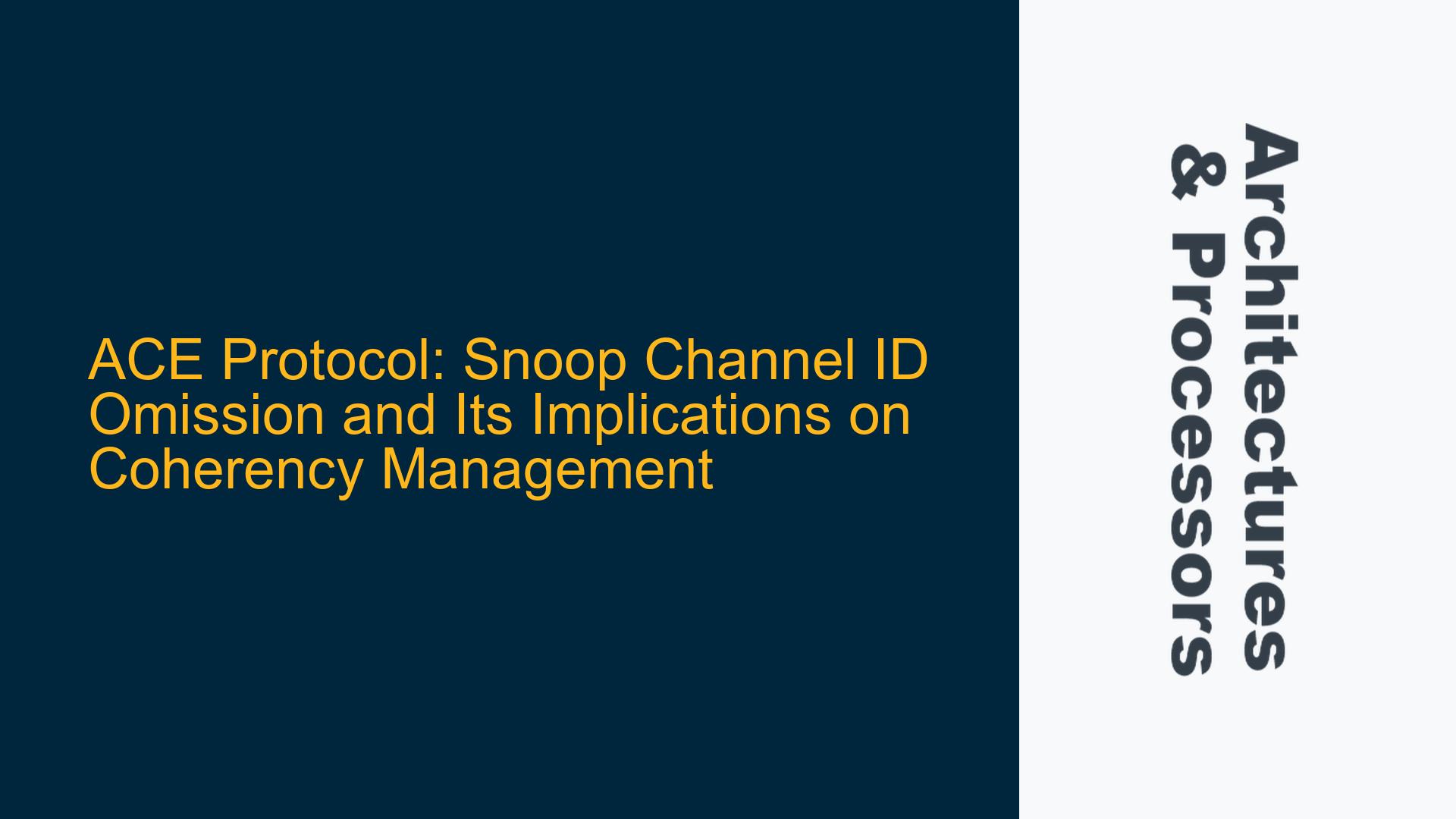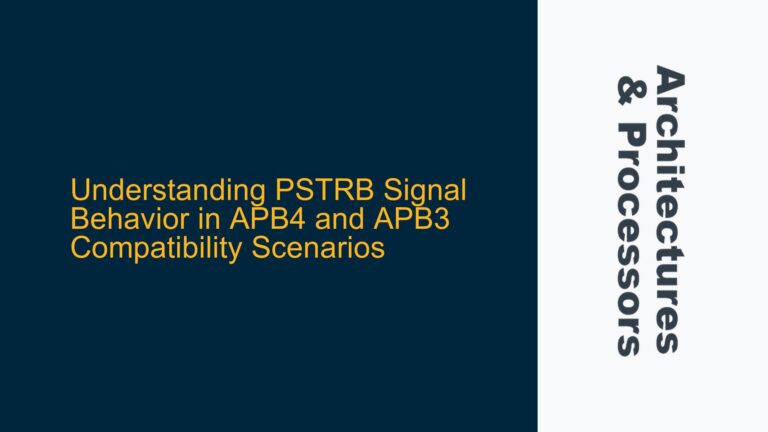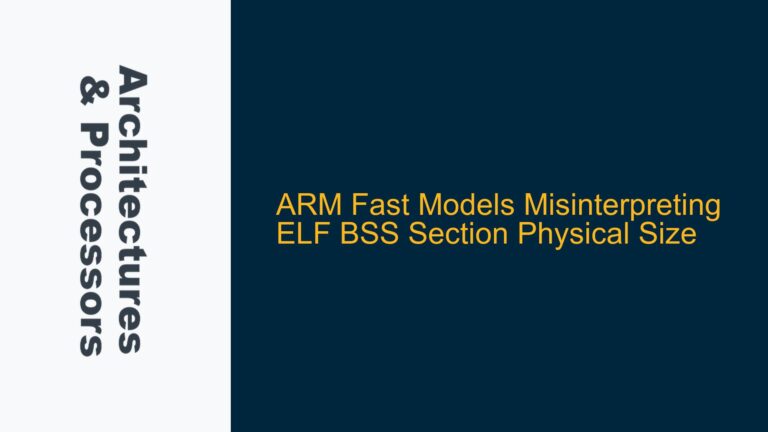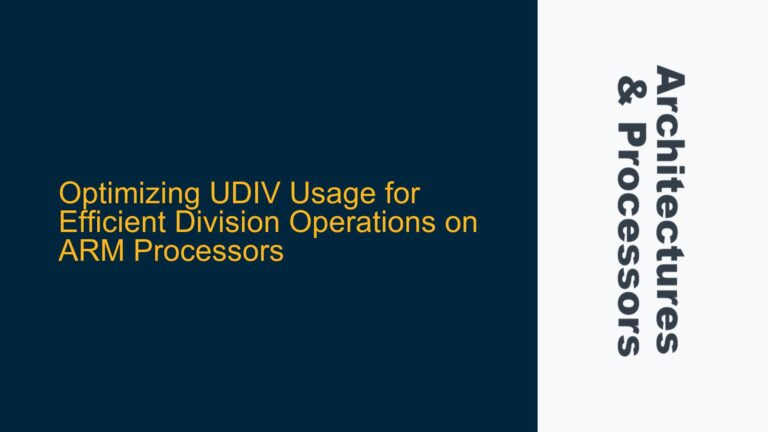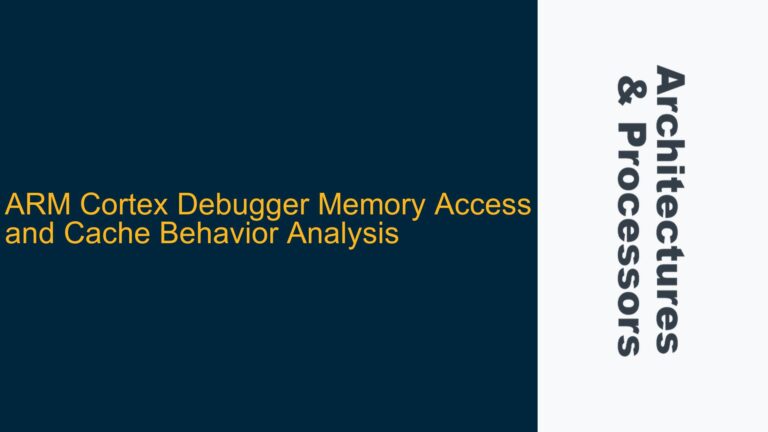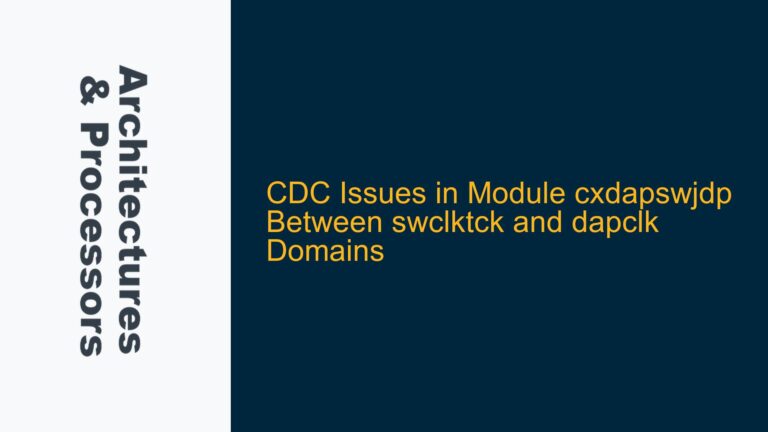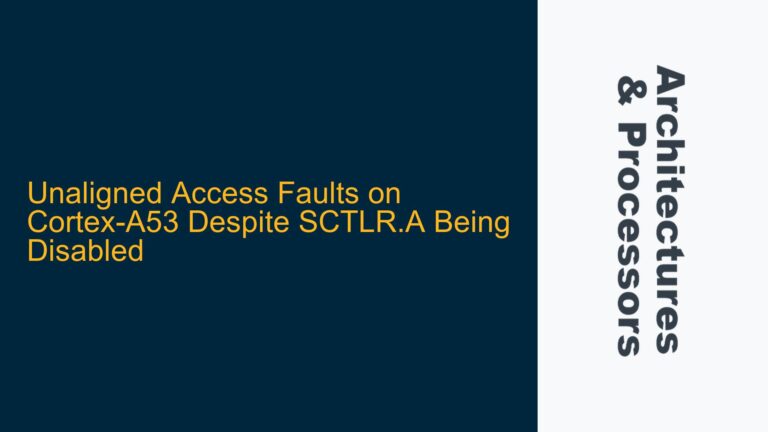ARM ACE Protocol Snoop Channel Design Rationale and ID Omission
The ARM ACE (AXI Coherency Extensions) protocol is designed to facilitate cache coherency in multi-master systems, ensuring that all masters observe a consistent view of memory. A critical aspect of this protocol is the snoop channel, which is responsible for managing coherency transactions between masters and the interconnect. Unlike the AR (Read Address) and AW (Write Address) channels in the AXI protocol, the AC (Snoop Address) channel does not include an ID field. This design choice is intentional and has significant implications for the behavior and implementation of the ACE protocol.
The absence of an ID field in the AC snoop channel is rooted in the need to simplify the coherency management logic within the ACE manager and the interconnect. By enforcing in-order processing of snoop transactions, the protocol eliminates the complexity associated with out-of-order snoop responses. This design decision is based on the assumption that the benefits of allowing out-of-order snoop transactions do not outweigh the added complexity and potential for increased latency in resolving coherency conflicts.
In a typical ACE-based system, multiple masters (e.g., M1, M2, M3) may request access to the same cache line. When a master issues a ReadUnique transaction, the interconnect must send snoop requests to other masters that may have a copy of the cache line. For instance, if M1 and M2 both issue ReadUnique transactions for the same cache line X, the interconnect will send snoop requests to M2 and M3 for M1’s transaction, and to M1 and M3 for M2’s transaction. The specification mandates that the interconnect processes these snoop requests in a specific order, ensuring that coherency is maintained without requiring complex reordering logic.
Outstanding Snoop Requests and Their Impact on Coherency Management
One of the key questions raised in the discussion is whether snoop requests to multiple masters (e.g., M2 and M3) can be outstanding simultaneously. The answer is yes; the interconnect can have multiple outstanding snoop requests to different masters at the same time. This capability is essential for maintaining system performance, as it allows the interconnect to parallelize coherency transactions across multiple masters. However, the absence of an ID field in the AC snoop channel means that the interconnect must ensure that snoop responses from each master are processed in the order they were issued.
The ability to have multiple outstanding snoop requests to the same master (e.g., M2) is also supported by the ACE protocol. However, the protocol requires that these requests be processed in order. This requirement is critical for maintaining coherency, as out-of-order processing of snoop requests could lead to inconsistencies in the cache state. For example, if two snoop requests are issued to M2 for the same cache line, the second request must not be processed until the first request has been completed. This ensures that the cache state observed by all masters remains consistent throughout the coherency transaction.
The in-order processing requirement for snoop requests has implications for the design of the ACE manager and the interconnect. Specifically, the ACE manager must include logic to track the order of snoop requests and ensure that responses are processed in the correct sequence. This logic can be implemented using a simple FIFO (First-In-First-Out) queue, where snoop requests are enqueued as they are issued and dequeued as responses are received. The use of a FIFO queue ensures that the order of snoop responses is preserved, simplifying the coherency management logic and reducing the risk of errors.
Implementing Snoop Channel Coherency: Strategies and Best Practices
To effectively implement the ACE protocol’s snoop channel and ensure robust coherency management, designers must adopt a systematic approach that addresses the following key areas:
Snoop Request Tracking and Order Enforcement
The first step in implementing the snoop channel is to establish a mechanism for tracking snoop requests and enforcing their order of processing. As discussed earlier, this can be achieved using a FIFO queue that maintains the sequence of snoop requests issued to each master. The FIFO queue should be sized to accommodate the maximum number of outstanding snoop requests that the system is expected to handle. This ensures that the ACE manager can efficiently manage coherency transactions without risking overflow or underflow conditions.
In addition to the FIFO queue, the ACE manager should include logic to detect and handle cases where a snoop request cannot be completed immediately. For example, if a master is temporarily unable to respond to a snoop request (e.g., due to a high-priority task), the ACE manager must be able to stall the coherency transaction until the master is ready to respond. This requires the ACE manager to implement a mechanism for signaling backpressure to the interconnect, ensuring that the system remains responsive and that coherency is maintained.
Snoop Response Handling and Cache State Management
Once a snoop request has been issued and a response has been received, the ACE manager must update the cache state accordingly. This involves interpreting the snoop response and determining whether the cache line needs to be invalidated, updated, or retained. The ACE protocol defines several types of snoop responses, including CleanInvalid, MakeInvalid, and MakeUnique, each of which has specific implications for the cache state.
To handle snoop responses effectively, the ACE manager must include logic to decode the response type and update the cache state accordingly. This logic should be designed to minimize latency and ensure that the cache state is updated atomically, preventing race conditions and ensuring coherency. For example, if a snoop response indicates that a cache line should be invalidated, the ACE manager must ensure that the invalidation operation is completed before any subsequent transactions involving the same cache line are processed.
Interconnect Configuration and Performance Optimization
The configuration of the interconnect plays a critical role in the performance of the ACE protocol’s snoop channel. Specifically, the interconnect must be designed to support the maximum number of outstanding snoop requests that the system is expected to handle, while minimizing latency and ensuring that coherency is maintained. This requires careful consideration of the interconnect’s topology, arbitration policies, and bandwidth allocation.
One common approach to optimizing interconnect performance is to implement a hierarchical topology, where multiple layers of interconnects are used to distribute coherency transactions across different regions of the system. This allows the system to scale to a larger number of masters while maintaining low latency and high throughput. Additionally, the interconnect should be configured to prioritize coherency transactions over other types of traffic, ensuring that snoop requests are processed with minimal delay.
Verification and Debugging of Snoop Channel Behavior
Given the complexity of the ACE protocol’s snoop channel, thorough verification and debugging are essential to ensure that the system operates correctly under all conditions. This involves simulating a wide range of coherency scenarios, including cases where multiple masters issue concurrent ReadUnique transactions, snoop requests are issued to the same master, and snoop responses are delayed or reordered.
To facilitate verification, designers should use a combination of simulation tools and formal verification techniques. Simulation tools can be used to model the behavior of the ACE manager, interconnect, and masters, allowing designers to observe the system’s response to different coherency scenarios. Formal verification techniques, on the other hand, can be used to prove that the system adheres to the ACE protocol’s coherency rules under all possible conditions.
In addition to simulation and formal verification, designers should implement comprehensive logging and debugging capabilities within the ACE manager and interconnect. This includes the ability to trace the flow of snoop requests and responses, monitor the state of the FIFO queue, and detect and report coherency violations. These capabilities are essential for diagnosing and resolving issues during system integration and testing.
Addressing Common Challenges in Snoop Channel Implementation
Despite the systematic approach outlined above, designers may encounter several challenges when implementing the ACE protocol’s snoop channel. These challenges include:
-
Deadlock and Livelock Conditions: The in-order processing requirement for snoop requests can lead to deadlock or livelock conditions if not managed carefully. For example, if two masters issue snoop requests to each other simultaneously, the system may enter a deadlock state where neither master can proceed. To prevent this, the ACE manager should include logic to detect and resolve deadlock conditions, such as by prioritizing one master’s request over the other.
-
Performance Bottlenecks: The snoop channel can become a performance bottleneck if the interconnect is unable to handle the volume of snoop requests generated by the masters. This can be mitigated by optimizing the interconnect’s topology and arbitration policies, as discussed earlier. Additionally, designers should consider implementing techniques such as snoop filtering, where the interconnect only issues snoop requests to masters that are likely to have a copy of the cache line, reducing the overall number of snoop transactions.
-
Power Management Considerations: In systems with dynamic power management, the snoop channel must be designed to operate efficiently under different power states. For example, if a master is in a low-power state, the ACE manager must be able to wake it up to respond to a snoop request. This requires careful coordination between the ACE manager and the power management unit, ensuring that coherency is maintained without compromising power efficiency.
Conclusion
The ARM ACE protocol’s snoop channel is a critical component of cache coherency management in multi-master systems. The absence of an ID field in the AC snoop channel simplifies the coherency management logic but imposes strict requirements on the order of snoop transactions. By adopting a systematic approach to snoop request tracking, response handling, interconnect configuration, and verification, designers can ensure that the snoop channel operates efficiently and maintains coherency under all conditions. Addressing common challenges such as deadlock, performance bottlenecks, and power management considerations further enhances the robustness and scalability of the system.
